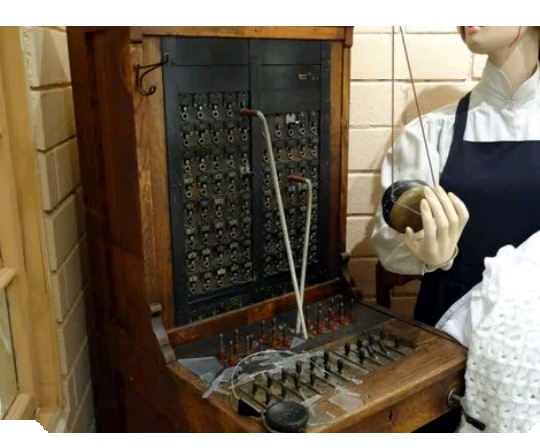Telephone history from switchboards to mobiles

1 Magneto payphones are full of style
Crave geeked out at the Telephone Museum of New Mexico in Albuquerque as part of its tour of Nerdy New Mexico.
This Magneto coin collector telephone on exhibit was in use in Columbus, N.M., between 1908 and 1956. Instructions on the front say, "Call the Central Office in the usual way. Do not deposit money until told by operator." If payphones still looked as awesome as this one, maybe there'd be more of them around.

2 Alexander Graham Bell kicks things off
The Telephone Museum of New Mexico keeps replicas of important early telephones on exhibit. This is a replica of the Alexander Graham Bell telephone that carried the first complete sentence. That sentence, in 1876, was Bell saying, "Mr. Watson, come here. I want to see you."

3 Switchboards ruled
Once upon a time, telephone calls weren't just magically transferred. They required human operators with patch cables routing calls across the country. These early switchboards were mostly manned by women. Later on, supervisors often wore roller skates so they could quickly move back and forth across the switchboard lines. The Telephone Museum of New Mexico preserves these large pieces of equipment.

4 Phone bill punch cards
This steampunk-looking device was attached to early switchboards. Operators would punch a card with the start time (left lever) and end time (right lever) for each call. This version is labeled as a "calculagraph." It's part of an early switchboard system on display at the Telephone Museum of New Mexico in Albuquerque.
>Read It Or Miss It
» Forgot Pattern Or Pin ? Don't Worry Try This Mathod To Unlock Your Device
» Make Your Computer Speak Your Name While Starting Your Pc
» 4 Bodily Signs A Heart Attack Is Near
» Why You Must Never Scratch a Mosquito Bite

5 Early hands-free headset
Switchboard operators needed to have their hands free to route calls. This operator chest transmitter may be one of the earliest examples of a hands-free headset. The ear piece sat over the top of the head, while the horn-shaped piece sat against the chest, curving up to the operator's mouth.

6 The switchboard that saved a town
The Telephone Museum of New Mexico features an extensive collection of old equipment that was once in use around the state. This particular switchboard was in Columbus, N.M., in 1916 when revolutionary leader Pancho Villa invaded the village. History has it that the operator stayed calm while guns went off in the streets. She quietly phoned for help from the nearby town of Deming. Troops arrived to save Columbus and the operator was hailed as a hero.

7 Explosion-proof telephone
Several explosion-proof telephone sets are on display at the Telephone Museum of New Mexico. These were used in mines and other places where the slightest spark could spell disaster. This particular set was used between 1967 and 1976 at the Los Alamos National Laboratory.

8 The 2 millionth telephone
Rotary dial telephones dominated much of the 20th century until push buttons eventually took over. What's so special about this particular rotary phone? It was the 2 millionth telephone installed by Mountain Bell. It was put into place at San Ildefonso Pueblo in New Mexico in 1958. Today, it's on exhibit at the Telephone Museum of New Mexico in Albuquerque.

9 AT&T gets visual
One of AT&T's early stabs at videoconferencing came in the form of this device. It wasn't much of a commercial success, perhaps because people weren't keen on having to check their appearance before making a call. Interestingly enough, that's still a concern people have about modern videoconferencing. The Telephone Museum of New Mexico has this device on display.

10 Brick-size mobile phone
Ah, the '80s were fun. We love to laugh at the brick-size mobile phones that first came out for use in cars. This, of course, was long before there were laws against talking on a phone and driving at the same time.

11 Telephone Museum of New Mexico
The Telephone Museum of New Mexico sits just off of Route 66 in Albuquerque. It's packed with switchboards, glass insulators, scale models of Telstar satellites, and lots and lots of obsolete phones. It is housed in a 1906 building that was originally built for telephone company use.
